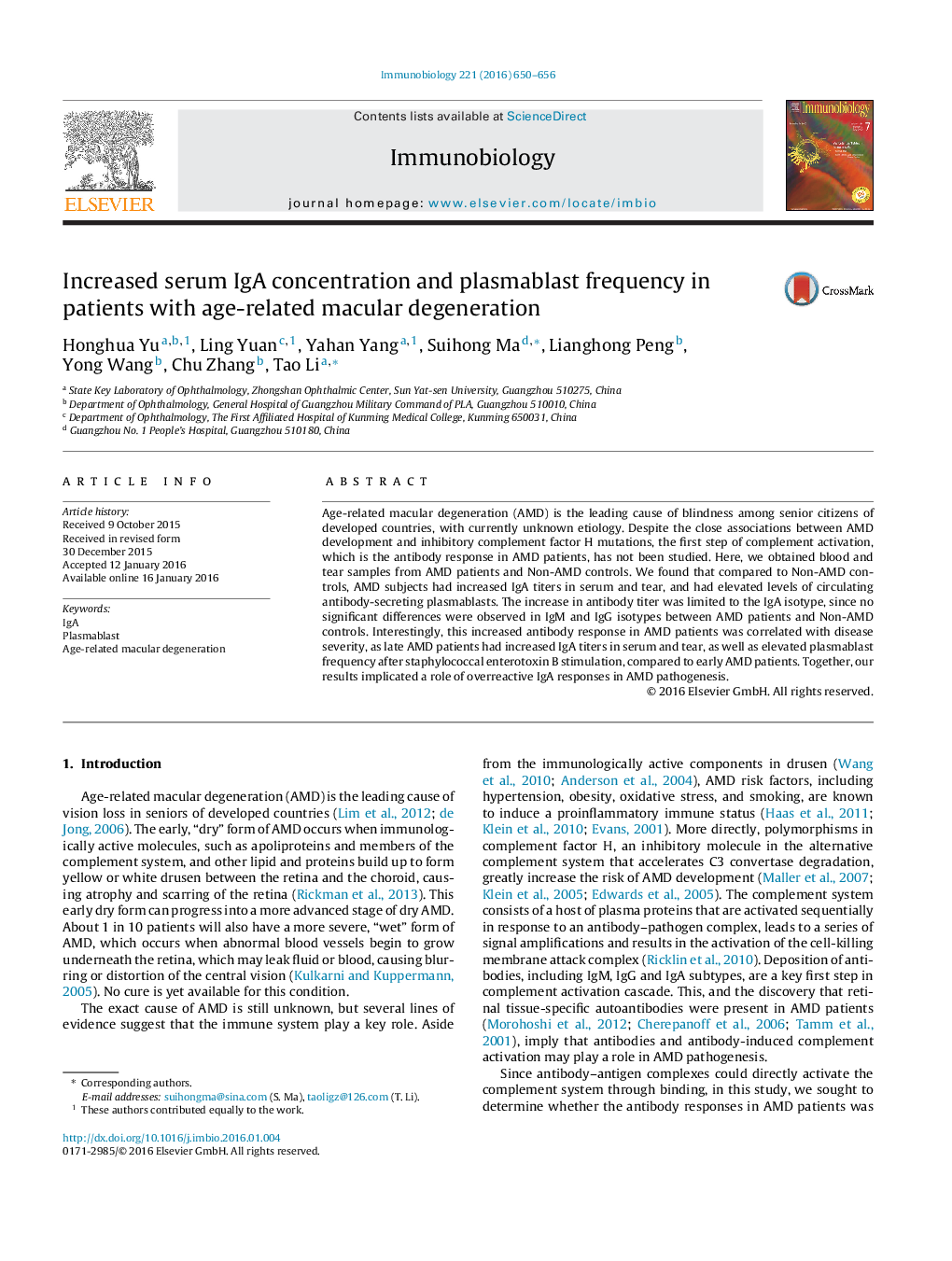| Article ID | Journal | Published Year | Pages | File Type |
|---|---|---|---|---|
| 2182742 | Immunobiology | 2016 | 7 Pages |
Age-related macular degeneration (AMD) is the leading cause of blindness among senior citizens of developed countries, with currently unknown etiology. Despite the close associations between AMD development and inhibitory complement factor H mutations, the first step of complement activation, which is the antibody response in AMD patients, has not been studied. Here, we obtained blood and tear samples from AMD patients and Non-AMD controls. We found that compared to Non-AMD controls, AMD subjects had increased IgA titers in serum and tear, and had elevated levels of circulating antibody-secreting plasmablasts. The increase in antibody titer was limited to the IgA isotype, since no significant differences were observed in IgM and IgG isotypes between AMD patients and Non-AMD controls. Interestingly, this increased antibody response in AMD patients was correlated with disease severity, as late AMD patients had increased IgA titers in serum and tear, as well as elevated plasmablast frequency after staphylococcal enterotoxin B stimulation, compared to early AMD patients. Together, our results implicated a role of overreactive IgA responses in AMD pathogenesis.
